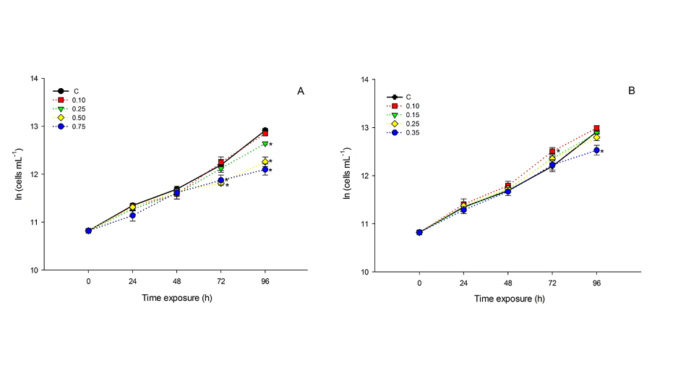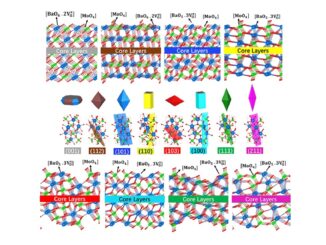
Isolated and combined effects of cobalt and nickel on the microalga Raphidocelis subcapitata
Abstract: Aquatic organisms are exposed to several compounds that occur in mixtures in the environment. Thus, it is important to investigate their impacts on organisms because these combined effects can be potentiated. Cobalt (Co) and nickel (Ni) are metals that occur in the environment and are used in human activities. To the best of our knowledge, there are no studies that investigated the combined effects of these metals on a freshwater Chlorophyceae. Therefore, this study analyzed the isolated and combined effects of Co and Ni in cell density, physiological and morphological parameters, reactive oxygen species (ROS), carbohydrates and photosynthetic parameters of the microalga Raphidocelis subcapitata. Data showed that Co affected the cell density from 0.25 mg Co L−1; the fluorescence of chlorophyll a (Chl a) (0.10 mg Co L−1); ROS production (0.50 mg Co L−1), total carbohydrates and efficiency of the oxygen evolving complex (OEC) at all tested concentrations; and the maximum quantum yield (ΦM) from 0.50 mg Co L−1. Ni exposure decreased ROS and cell density (0.35 mg Ni L−1); altered Chl a fluorescence and carbohydrates at all tested concentrations; and did not alter photosynthetic parameters. Regarding the Co-Ni mixtures, our data best fitted the concentration addition (CA) model and dose-ratio dependent (DR) deviation in which synergism was observed at low doses of Co and high doses of Ni and antagonism occurred at high doses of Co and low doses of Ni. The combined metals affected ROS production, carbohydrates, ΦM, OEC and morphological and physiological parameters.
Author(s): Larissa Luiza dos Reis, Cínthia Bruno de Abreu, Renan Castelhano Gebara, Giseli Swerts Rocha, Elson Longo, Adrislaine da Silva Mansano & Maria da Graça Gama Melão
Ecotoxicology
Published: 18 January 2024, Volume 33, pages 104–118
DOI: https://doi.org/10.1007/s10646-024-02728-0
CDMF
The CDMF, hosted at the Federal University of São Carlos (UFSCar), is one of the Research, Innovation and Dissemination Centers (RIDC) supported by the São Paulo State Research Support Foundation (Fapesp), and also receives investment from the National Council Scientific and Technological Development (CNPq), from the National Institute of Science and Technology of Materials in Nanotechnology (INCTMN).




